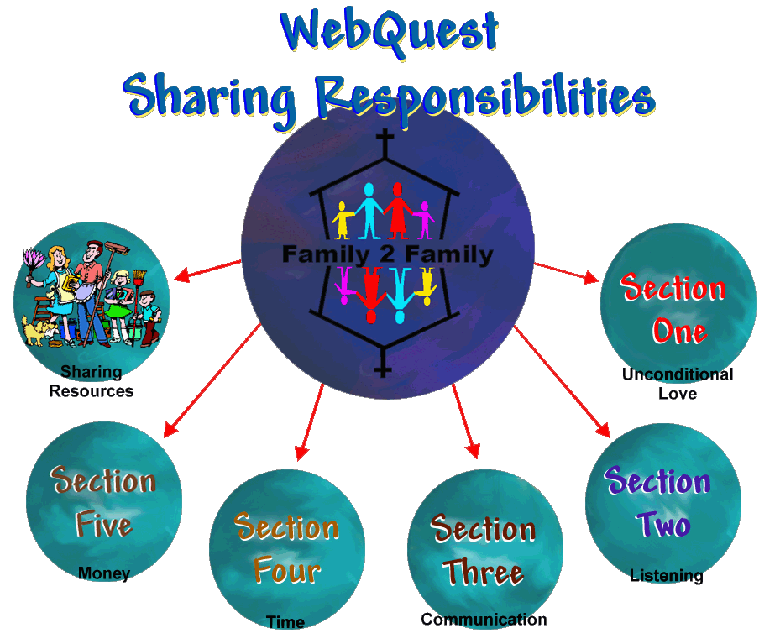How
Can We Share Family Responsibilities?
When
women work, they do not have enough time to continue to take
on all of the family responsibilities, so their husbands have
to share housework. However, that is still far from "harmonization"
because of socially deep-rooted attitudes about appropriate
roles for men and women. Most men share housework if their
wives are work-overload, sick or too busy with young children,
but few share so that both husband and wife can have more
leisure time. It is still very normal to see family men watching
TV, reading the paper or drinking coffee while the women wash
clothes, do the dishes or take care of children.
There is no "men's work" or "women's work"
-- why should we keep that kind of discrimination between
men and women? Unpaid family and community responsibilities
are just as important as paid work. In fact, that kind of
labor facilitates other work in society. We should value unpaid
work to fulfill family and community responsibilities just
as highly, and pay it just as well, as if we had to pay hired
labor.
Men are taking a greater, but not yet an equal, share in responsibility
for housework, childcare, care of the elderly than they used
to do. It takes time to change social attitudes -- especially
men's attitudes -- to achieve real equality. The same challenges
exist with regards to boys contributing to housework, childcare
and care of the elderly. Girls and women still make a greater
contribution to these kinds of work. Many girls and women
are to blame when they usually say to boys and men, "Out
of the kitchen! This is women's place! "
|
Your
Task
1.
In a mentoring team, discussion is essential. Allow each member
to share ideas during each step of the WebQuest process.
2.
During this study you will be discussing sharing household responsibilities.
3.
Follow the six process steps.
Step
1 - Learn about the family history.
Step
2 - Read the case study and answer the reflection questions.
Step
3 - Produce a Problem Statement and add it to the Discussion/Communication
box to share what you have done with others.
Step
4 - Use the Links to go on a WebQuest to research on the
web.
Step
5 - Produce a Hypothesis and use the Discussion/Communication
box to share what you have come up with.
Step
6 - Finally, use the Discussion/Communication box again
to reflect and share on the learning experience.
|
Step 1:
Learn about a family
Pick
a family from the choices linked on the family history page
and learn about a family, their history and all the struggles
they are currently facing.
|
Read
a case study from one of the following categories that match the
family history that you read from Step 1
Create
a list on a piece of paper under the heading: "What do we know?"
This may include data from the family history, the case study, or
information based on prior knowledge.
|
|
STEP
1 | STEP
2 | STEP
3 | STEP 4 | STEP
5 | STEP 6
Step
3: Develop a Problem Statement
A
problem statement should come from your analysis of what you know.
The problem statement will probably have to be refined as new information
is discovered and brought to bear on the situation. Typical problem
statements may be based on discrepant events, incongruities, anomalies,
or stated needs of the family.
Need
Help? View Problem Statement
Helps
"What
is this families problem"
Problem
Statement Discussion Boards
Enter
The Family Life Curriculum Forum and submit your problem
statement on the discussion page.

|
|

|
|

|
|

Forum
Rules:
1.
You must log on by creating a user name and password.
2.
Each group should maintain the same user name to enable
discussion consistency.
3.
You may not use the discussion boards for sales or advertisements.
4.
You may not use profanity.
5.
Respect and courtesy for others is required.
|
|
List
on paper what is needed for your family. Presented with the problem,
you will need to find information on this topic to research family
issues. Make a second list on your paper under the heading: "What
do we need to know?" These questions will guide searches that
will take place on-line.
|
Step
5: Formulate a hypothesis
Under
the heading: "What should we do?" list actions that may
be taken, recommendations and solutions.
Need
Help? View Hypothesis Helps
"What
should we do?"
Hypothesis
Statement Discussion Boards
Enter
The Family Life Curriculum Forum and submit your hypothesis
statement on the discussion page.

|
|

|
|

|
|

Forum
Rules:
1.
You must log on by creating a user name and password.
2.
Each group should maintain the same user name to enable
discussion consistency.
3.
You may not use the discussion boards for sales or advertisements.
4.
You may not use profanity.
5.
Respect and courtesy for others is required
|
|
STEP
1 | STEP
2 | STEP
3 | STEP 4 | STEP
5 | STEP 6
Step
6: Reflection and Sharing
As
part of reflection and sharing, present your findings and recommendations.
The presentation should bring together all the material gathered in
the previous steps. Analyze the problem statement, questions, data
gathered, analysis of data, and support for solutions and recommendations
based on other peoples comments in the discussion pages to make an
argument to support your solution.
Need
Help? View Reflection Helps
"Conclusion"
Reflection
Statement Discussion Boards
Enter
The Family Life Curriculum Forum and submit your reflection
statement on the discussion page.

|
|

|
|

|
|

Forum
Rules:
1.
You must log on by creating a user name and password.
2.
Each group should maintain the same user name to enable
discussion consistency.
3.
You may not use the discussion boards for sales or advertisements.
4.
You may not use profanity.
5.
Respect and courtesy for others is required.
|
|
The
following are ways families can come together to create a more
supportive households:
- Expect
and accept family members' differences of opinion, techniques
and working styles, try to be flexible and work as a team.
- Don't
be afraid to ask for help in household responsibilities, and
learn how to graciously accept it.
- Express
appreciation to family members who are trying to help, even
if the help isn't exactly what is needed.
- Be
realistic in dividing up household responsibilities. Allow
family members to help in ways they are able and divide tasks
according to individual abilities, current lifestyles, and
schedules.
- Household
responsibilities will vary from day to day, week to week.
Encourage family members to remain flexible and pitch in when
extra help is needed.
- Involve
the person who makes the mess to clean up the mess.
- Every
member of the household should always be a central part of
all discussions and actions surrounding making a list of chores
and responsibilities.
- When
chores and schedules don't mix. Have a back-up plan, if possible.
It
may also be helpful to have family meetings. This may be a time
to encourage everyone to feel part of a cooperative team. Provide
rewards to be presented at the meetings and this will encourage
everyone to participate in the household responsibilities.
|
|
|




